Learn How to Play the Guitar - for Beginners
How to Play the Guitar: A Step-by-Step Guide
Introduction
Taking the first step in any new endeavor is often the hardest part, and since it can only be taken once, proper initial guidance is crucial for ensuring progress. By visiting this page, you’ve already taken some important steps: you found something you want to explore and may even have a clear vision of what you want to achieve with your new guitar playing hobby. As the wise saying goes, “The seed always contains the fruit.” While the success of your guitar journey won’t be determined solely by this seeding moment, your initial motivation and direction are vital to reap the desired results.
With the right guidance and dedication, you’ll be well on your way to mastering the guitar and achieving your musical goals.
Guitar Parts
There are many parts of a guitar for a beginner to learn. Let’s keep it simple and focus on the most important parts. Once you know a few names for things and what they do, it’s all surprisingly simple.
There are two basic functions of the guitar:
- Playing the notes
- Amplifying the sound
All parts of the guitar relate to one of these functions. The guitar neck represents the playing function: the tuning keys on the head help you wind the string, making it tighter or looser. We press the strings on the fretboard to create notes and chords. Along the fretboard, we have those metal frets and can play notes or create chords by pressing the string(s) down just behind the fret.
The duty of the guitar’s body is to amplify what we play: the strings are attached to the bridge and the whole instrument starts resonating when we hit a chord. The hollow body of an acoustic guitar allows sound produced from the strings to be amplified.
The electric guitar’s pickups are mostly magnetic parts, they are responsible for picking up the string/body vibrations and translating them into sound through your amplifier. By using the pickup selector switch, you can choose which pickup(s) to activate.

1. Holding the Guitar: Body Position
“A guitar is a very personal extension of the person playing it.” – Eddie Van Halen
Sitting
We should be fully aware of our posture while keeping our back as straight as possible and the guitar perpendicular to the ground. It’s fast-track to back pain, poor technique and unexpressive playing if we are tilting the guitar backward while practicing to see the fretboard. Check your body posture regularly and ask yourself: is my guitar really a natural extension of my body? Am I happily united with it? Is it really a happy journey right now? Keep your learning process effective, but also healthy and comfortable.
Rest the guitar on your leg and stabilize the guitar slightly with your picking hand’s arm and hold it tightly against your body with your elbow. Your fretting hand shouldn’t play any role in balancing the instrument. That hand’s duty is pressing down the strings, only! Ensure your guitar is properly stabilized without relying on your fretting hand. You should be able to move and reposition your playing hand quickly!
Have a guitar strap and adjust it: slide the buckle up or down to adjust its length. If the guitar is positioned too low, you’ll struggle to use your picking hand effectively. If the guitar is too high, holding your arms up that high will not be comfortable in the long term.
Standing
The length of the guitar strap becomes part of our self-expression and playing style when we stand up. Some players keep the guitar in a higher position to allow easy access to the fretboard, while others lower the guitar as much as possible because it looks awesome and feels good.
Playing in a standing position requires more awareness from players. The way how we move our body is also part of the process: moving and dancing with the music can help reduce stress and mental interference while playing, but a lack of self-discipline could hinder our potential for skillful playing.
Learning to use our body from bottom to top (body-mind-spirit balance) is an art in itself: how to eliminate unnecessary tension, using only the specific muscles, maintaining good body posture that enhances efficient and accurate playing and the health of tendons and nerves in fingers and arms. How to be rooted confidently to the ground and also connected to the audience. Playing music is a form of self-expression which demands a degree of mastery over our entire body.

2. How to Tune: Guitar App
‘Eat A Dead Grasshopper Before Everything’ is one of the funny sayings we can use to memorize the string names of standard tuning. The 1st string is the high E and the low string is the 6th string. ‘Elephants And Donkeys Grow Big Ears’ could be an even more visual memo.
A fast and accurate electronic guitar tuner might be the best option, or alternativel, we could also use a free or paid smartphone app. Basically, all tuners are broadly the same: pluck a note and the tuner shows the note you played. A needle or light will show you how far away from the note you are, the tuning is done when the needle or light is in the middle: you can see how it goes in the ‘Why didn’t Frusciante tune his guitar?!’ video, at 1:00.
If staying in tune becomes challenging while playing or if our strings sound dull, we need to replace them with new strings. When you are changing strings, be sure to stretch your new strings by gently pulling upon them. Take care of your guitar, avoid exposing it to large temperature or humidity fluctuations. When you are done playing, wipe the strings down with a cloth and then store your guitar in its case or bag.
Alternate Tuning on the Guitar
“When you tune your guitar in a different way, it lends itself to a new way of looking at your songwriting.” – Sheryl Crow
Although, the most popular tuning by far is ‘standard tuning’, there are several different guitar tuning profiles. It’s important to learn the standard forms first and then we can slowly deviate to special solutions that suit our artistic vision more.
A good example is Iris, the beautiful song written by Johnny Rzeznik of the Goo Goo Dolls.
“I’d broken two strings on my guitar, so I’d started winding all the strings up and down in these weird configurations, and that song just came out. It was like a gift – like: ‘Oh, thanks God!’”
If you want to start exploring the reality of alternative tunings, then you will find Jim Goodin’s Encyclopedia to be a good starting point.
3. Guitar Technique: Left Hand/Fretting Hand
We already mentioned that our fretting hand isn’t holding up the guitar while playing. The most important task of the fretting hand is feeding the picking hand. The synchronicity of our two hands and the process of ‘feeding’ is crucial. The notes first should be fretted on the fingerboard and then ‘fed’ to the right hand: our technique will improve quickly if we are aware of what is happening. If our fretting hand feeds the playing hand poorly, especially at high speeds, the result won’t be fluid.
Relaxed hands enable our music to flow easily (for an example of fluid playing on an extreme level, check the video), our coordination will be improved and we could increase our speed more easily. Correct and flexible thumb placement (moving and adapting the thumb to the positions of the palm and fingers) supports ease of motion and comfort in the left hand, furthermore allows maximum reach across the fretboard.
The well-positioned fingers are naturally curved in the middle of their range of motion. The exact part of the fingertip that should contact the fingerboard may be slightly different for each finger; not all fingers need to contact the string at the center of the fingertip. The exact position will depend on the size and build of your hand.
4. Guitar Technique: Right Hand/Playing Hand
We can stabilize the guitar with our picking hand’s arm a bit while keeping our shoulder and forearm relaxed.
Plectrum
Using a plectrum is probably the most common right-hand technique favoured by many guitarists. Techniques such as alternate picking, sweep picking, economy picking are hard to achieve with other right-hand techniques.
First, we should find the pick that suits the best to our playing style and sound. Experiment with different plectrums, each one produces a different sound, so see which one you like the best. Relatively thicker plectrums produce a sound with a wider dynamic range.
The actual movement of your picking hand should come from your wrist, so keep it relaxed at all times. The most effective and economical way of using the plectrum is to use our thumb and forefinger in a ‘writing’ motion, similar to drawing or writing. Try drawing something with your plectrum to feel the correct wrist movement and plectrum placement between your fingers. The only difference is that our right hand should be anchored to the guitar in some way, and we need to find the proper angle and depth for the pick while touching the strings.
Thumb
There are advantages of abandoning the pick as a guitarist. There’s a special connectedness about playing with your fingers – it feels like you have more control and it also produces a purer-sounding note. Finger pickers like Mark Knopfler, Jeff Beck or Wes Montgomery are able to create a vast range of tones with a pure fingerstyle approach and even well-known shredders like Richie Kotzen decided to stick with it.
It’s a more natural way of picking if we learn how to use our fingers, first of all, our thumb. Using the thumb produces a warm sound that can’t be achieved with a plectrum: anchor your palm on the guitar and hit the strings with the flesh part of your thumb.
Similarly to plectrum playing, we could play up and down strokes, while we can also play faster lines by legato. Even if we prefer using the pick, using the thumb could be a tool to provide a different texture and effect.
Fingerstyle
Fingerpicking has always been the default method for classical guitar players, but the approach became very popular in solo jazz guitar as well. A basic starting position and simple, efficient way to begin is to place our index, middle, and ring fingers lightly on the treble strings, while the thumb can rest comfortably on any of the top three bass strings. We don’t have to move much: light pressure with the fingers is all we need. Pluck individually with the fingers to play melodies or multiple notes simultaneously to play chords.
Hybrid Picking
Players attached to their pick may like a combination of pick and fingers to get the best of both worlds. This playing style is normally associate with country or jazz-rock, common amongst ‘chicken picking’ guitarists such as Greg Koch or fusionist like Greg Howe. Hybrid picking is simply combing the fingerstyle and plectrum approach, usually by holding the pick with your first finger and thumb and using your other fingers independently.
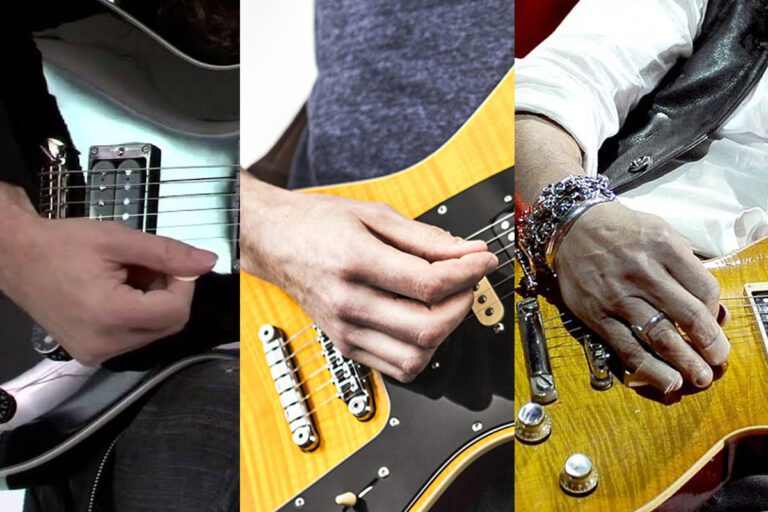
5. Learn Guitar Chords
There’s a guitar chord system called the CAGED system that helps us visualize and connect the guitar fretboard. It introduces the fretboard in a logical manner, enabling us to recognize chord shapes easily and transpose open chord shapes quickly using the barre technique.
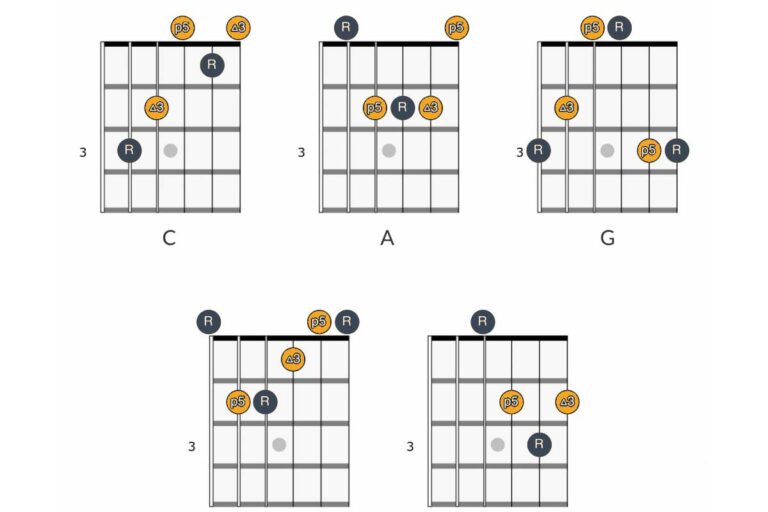
By using the barre technique, we are basically creating a new, temporary nut and using it as a reference point while transposing the basic chords. You can do it by pressing your index finger barred across five or six string at the same fret.
For novice players, holding down all six strings with one finger could be extremely challenging. The chords could sound muted turning down the novice player’s motivation. To avoid frustration, we can share a few ideas.
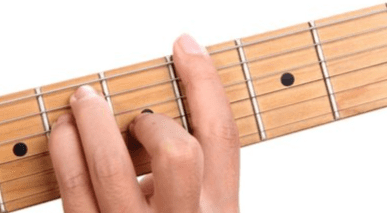
Tips:
- Slowly build strength in your fingers before learning bar chord shapes.
- Hold your finger close to the fret.
- Do not to curve your index finger too much.
- Hold your wrist curved so your index finger could cover the strings properly.
- Position your thumb correctly as we learnt it in point 3
6. Learn How to Read Guitar Tab
Sight-reading, the process of performing a piece by reading it from sheet music, is less natural for guitarists compared to keyboard players. While the stave tells us which notes to play, it doesn’t indicate where to play them. The Tablature or Tab system is designed for string players and is an effective tool that helps guitar players to easily learn how to play chords, melodies, and songs by visualising strings, fret positions and also providing guidance on finger placement.
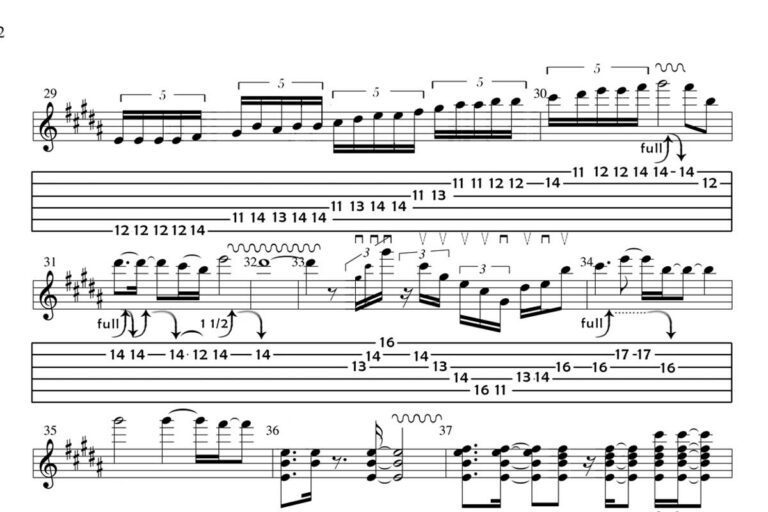
The Animals: The House Of The Rising Sun - Songsterr Tablatura
Songsterr is one of the easiest free tablature websites to use, featuring a clean and simple design. It provides novice players with full demonstrations and interactive guidance on how to play their favorite songs, boasting an enormous collection of songs.
The chord progression of The House Of The Rising Sun could be an ideal starting point to have your first CAGED practice while learning how to switch between C, E, D shapes, trasposing E shape to form an F major chord plus you can also learn the A minor chord.
Goo Goo Dolls: Iris - Youtube Video Demonstration
Many online tutorials teach guitar players how to play this song, but only a few are accurate. This video demonstration guides you through the tuning process, explores the creativity of alternative tunings, and highlights the beauty in simplicity. Follow the instructions, and you’ll effortlessly master a catchy song.
Tips:
- Find accurate tabs so you can learn all the details properly.
- Reduce the songs to small chunks/fractions first, then work on the transitions.
- Make sure your practice is consistent, practice on daily basis if possible.
- Pay special attention to the parts of the song where you are less confident.
- If you are confident with the structure and changes: use a metronome.
- Record yourself and listen to your recording.
- Be patient, trust yourself.
7. General Guitar Tips for Beginners
#1 "If your practice is easy, it’s not helping" – Joe Satriani
We often opt for technical solutions that we can execute flawlessly, without truly challenging our fingers. This is generally acceptable, especially for beginners. However, if we consistently choose the easiest path and it becomes habitual, it can result in a dull musical experience. Don’t let technique dictate what or how you play, or define your sound. First, hear the sound of your music in your mind; then, find the appropriate technique to bring that music to life with meticulous detail.
#2 "It’s more than theory" – Guthrie Govan
If we can’t play what we hear in our head, our music might rely solely on textbook information, resulting in an uninspired sound. It’s essential to ‘feel’ the theory we learn; knowledge, such as simple intervals or intricate exotic scales, should be connected to qualities we want to express in our music.
#3 "Figure out how to make the most important statement with the least amount of notes" - Larry Carlton
Less is more (Yngwie Malmsteen would strongly disagree, but let’s give this approach a chance for now)
Playing only the right notes with perfect sound and technique, where they fit appropriately, is more satisfying for both the listener and the player than consistently adding everything at once.
#4 "Rhythm needs precision" - John Petrucci
The advice of the great virtuoso is important even for players who do not aspire to the hero approach: most professional guitarists earn their living playing rhythm guitar and solo only a small percentage of the time. Since music revolves around timing, our feel is crucial! Learn to practice with a metronome, then analyze your recorded playing while honing your internal sense of rhythm.
#5 "Being able to block out everything except the music and essential info is a good skill" - Adam Goldsmith
The moment we choose to play music, we dedicate ourselves to creating something. The more committed our approach and focused our effort, the greater our chance of success.
Keep this equation in mind:
P=p−i
Performance=potential−interference
FAQ:
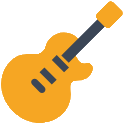
Guitar Lessons in Cork
[email protected] Let’s whatsapp! 🏠 Have professional Guitar lessons in Cork, at the teacher’s studio or at home! 🎓 Our Guitar teachers in Cork are certified
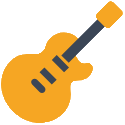
Guitar Lessons in Brussels
[email protected] Let’s whatsapp! 🏠 Have professional Guitar lessons in Brussels, at the teacher’s studio or at home! 🎓 Our Guitar teachers in Brussels are certified
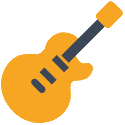
Guitar Lessons in Luxembourg
[email protected] Let’s whatsapp! 🏠 Have professional Guitar lessons in Luxembourg, at the teacher’s studio or at home! 🎓 Our Guitar teachers in Luxembourg are certified
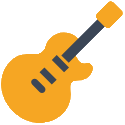
Guitar Lessons in Amsterdam
[email protected] Let’s whatsapp! Guitar lessons in Amsterdam Damvibes Guitar classes for Beginners to Advanced ✓ First trial guitar lesson at home or at the teacher’s
Have a Guitar Teacher!
Online & Face-to-face guitar lessons
- 1 free trial lesson
- Conservatory-graduated teachers
- Learn violin technique, chords & your favourite guitar songs
